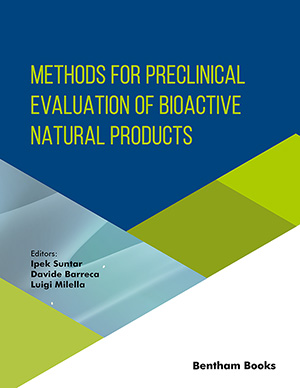Abstract
Epoxide hydrolase (EH) is a crucial enzyme responsible for catabolism, detoxification, and regulation of signaling molecules in various organisms including human beings. In mammals, EHs are classified according to their DNA sequence, sub-cellular location, and activity into eight major classes: soluble EH (sEH), microsomal EH (mEH), leukotriene A4 hydrolase (LTA4H), cholesterol EH (ChEH), hepoxilin EH, paternally expressed gene 1 (peg1/MEST), EH3, and EH4. The sEH, an α/β-hydrolase fold family enzyme, is an emerging pharmacological target in multiple diseases namely, cardiovascular disease, neurodegenerative disease, chronic pain, fibrosis, diabetes, pulmonary diseases, and immunological disease. It exhibits prominent physiological effects including anti-inflammatory, anti-migratory, and vasodilatory effects. Its efficacy has been documented in various clinical trials and observational studies. This review specifically highlights the development of soluble epoxide hydrolase inhibitors (sEHIs) in the clinical setting for the management of metabolic syndrome and related disorders, such as cardiovascular effects, endothelial dysfunction, arterial disease, hypertension, diabetes, obesity, heart failure, and dyslipidemia. In addition, limitations and future aspects of sEHIs have also been highlighted which will help the investigators to bring the sEHI to the clinics.
Keywords: Soluble epoxide hydrolase, arachidonic acid, metabolic syndrome, hypertension, diabetes, clinical, cardiovascular.
[http://dx.doi.org/10.1073/pnas.0437829100] [PMID: 12574508]
[http://dx.doi.org/10.1074/jbc.M001153200] [PMID: 10862610]
[http://dx.doi.org/10.1016/j.biochi.2012.06.011] [PMID: 22722082]
[http://dx.doi.org/10.1002/ps.1583] [PMID: 18383502]
[http://dx.doi.org/10.1146/annurev-pharmtox-011112-140244] [PMID: 23020295]
[http://dx.doi.org/10.1021/acs.jmedchem.9b00445] [PMID: 31436984]
[http://dx.doi.org/10.1097/FJC.0b013e3181506445] [PMID: 17878749]
[http://dx.doi.org/10.1073/pnas.1601532113] [PMID: 26976569]
[http://dx.doi.org/10.2217/pmt.11.47] [PMID: 24645702]
[http://dx.doi.org/10.1021/jm201468j] [PMID: 22168898]
[http://dx.doi.org/10.1002/JLB.3MA1017-423R] [PMID: 29345370]
[http://dx.doi.org/10.1016/j.bbrc.2011.06.008] [PMID: 21683067]
[http://dx.doi.org/10.1007/s11906-018-0812-z] [PMID: 29480368]
[http://dx.doi.org/10.1038/s41598-020-59203-z] [PMID: 32047219]
[http://dx.doi.org/10.1371/journal.pone.0194490] [PMID: 29566051]
[http://dx.doi.org/10.1155/2017/8765804] [PMID: 28293668]
[http://dx.doi.org/10.1155/2014/943162] [PMID: 24711954]
[http://dx.doi.org/10.1586/ecp.12.74] [PMID: 23272792]
[http://dx.doi.org/10.1016/j.prostaglandins.2018.12.003] [PMID: 30593866]
[http://dx.doi.org/10.1124/dmd.115.063339] [PMID: 25762541]
[http://dx.doi.org/10.1016/B978-0-12-490950-2.50013-9]
[http://dx.doi.org/10.1155/2012/758614] [PMID: 22007192]
[http://dx.doi.org/10.1016/j.compbiolchem.2018.02.019] [PMID: 29522918]
[http://dx.doi.org/10.1038/nrd2875] [PMID: 19794443]
[http://dx.doi.org/10.1111/bcpt.12134] [PMID: 24015667]
[http://dx.doi.org/10.2741/4465] [PMID: 27100515]
[http://dx.doi.org/10.1161/HYPERTENSIONAHA.118.10269] [PMID: 29760152]
[http://dx.doi.org/10.1007/s11883-010-0108-5] [PMID: 20425256]
[http://dx.doi.org/10.3109/03602532.2012.754460] [PMID: 23600686]
[http://dx.doi.org/10.3945/an.116.012245] [PMID: 28140329]
[http://dx.doi.org/10.3389/fphar.2019.00731] [PMID: 31293429]
[http://dx.doi.org/10.1016/j.pharmthera.2018.06.015] [PMID: 29964123]
[http://dx.doi.org/10.1161/01.HYP.0000153792.29478.1d] [PMID: 15699457]
[http://dx.doi.org/10.1152/ajpheart.00920.2013] [PMID: 24561863]
[http://dx.doi.org/10.1016/j.prostaglandins.2015.04.004] [PMID: 25908301]
[http://dx.doi.org/10.1186/s12871-018-0490-z] [PMID: 29703148]
[http://dx.doi.org/10.1016/j.yjmcc.2020.12.013] [PMID: 33378686]
[http://dx.doi.org/10.1016/j.prostaglandins.2018.07.004] [PMID: 30041041]
[http://dx.doi.org/10.1152/ajpheart.00568.2015] [PMID: 26453332]
[http://dx.doi.org/10.1016/j.bmcl.2010.12.042] [PMID: 21211973]
[http://dx.doi.org/10.1177/0091270010397049] [PMID: 21422238]
[http://dx.doi.org/10.33549/physiolres.934291] [PMID: 31475560]
[http://dx.doi.org/10.1016/j.prostaglandins.2013.02.001] [PMID: 23434473]
[http://dx.doi.org/10.1111/bcp.12855] [PMID: 26620151]
[http://dx.doi.org/10.1016/j.chest.2016.10.058] [PMID: 27884766]
[http://dx.doi.org/10.1016/j.prostaglandins.2014.08.001] [PMID: 25173047]
[http://dx.doi.org/10.1016/j.prostaglandins.2016.07.010] [PMID: 27448715]
[http://dx.doi.org/10.1007/s00125-017-4260-0] [PMID: 28352940]
[http://dx.doi.org/10.1111/j.1755-5922.2011.00282.x] [PMID: 21884016]
[http://dx.doi.org/10.1016/j.metabol.2014.04.005] [PMID: 24850465]
[http://dx.doi.org/10.1507/endocrj.EJ11-0394] [PMID: 22293584]
[http://dx.doi.org/10.1016/j.clnu.2010.07.011] [PMID: 20705373]
[http://dx.doi.org/10.1016/S0735-1097(99)00548-3] [PMID: 10676668]
[http://dx.doi.org/10.1161/HYPERTENSIONAHA.114.03179] [PMID: 24777981]
[http://dx.doi.org/10.1172/JCI58128] [PMID: 22182838]
[http://dx.doi.org/10.1073/pnas.1311565110] [PMID: 23898174]
[http://dx.doi.org/10.3390/molecules25235488] [PMID: 33255197]
[http://dx.doi.org/10.1016/j.pharmthera.2011.03.015] [PMID: 21514320]
[http://dx.doi.org/10.1021/acs.jmedchem.0c01886] [PMID: 33550801]
[http://dx.doi.org/10.1002/sctm.20-0143] [PMID: 32790136]
[http://dx.doi.org/10.1016/j.pneurobio.2018.11.001] [PMID: 30447256]






























